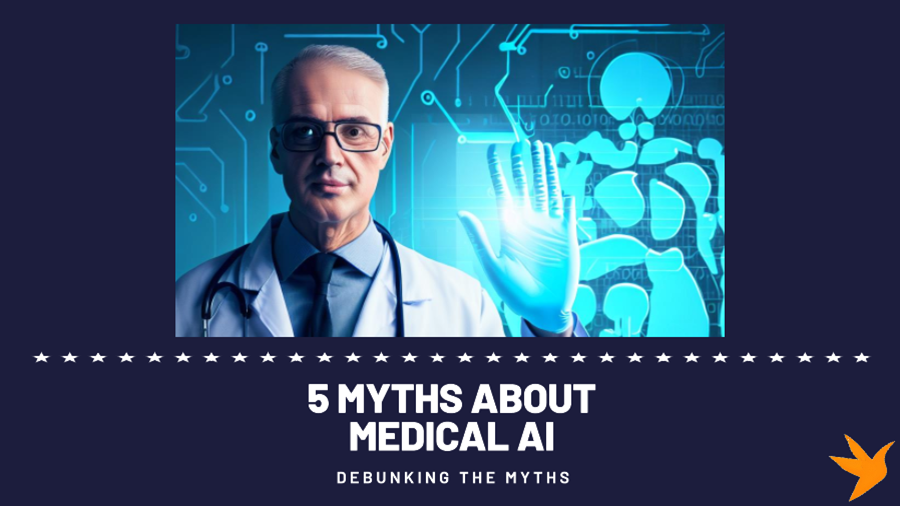Debunking 5 Myths About Medical AI

In 2015, a visionary research team at Google embarked on a mission to harness the power of artificial intelligence (AI) to revolutionize healthcare. Driven by the goal of enhancing access to life-changing eye care, they partnered with doctors like Dr. Kim Ramasamy from Aravind Eye Hospital. The team recognized the global shortage of specialists and aimed to leverage AI to extend the reach of doctors. Their groundbreaking work focused on diabetic retinopathy (DR), a leading cause of preventable blindness. By 2016, they developed an AI model that matched the diagnostic capabilities of eyecare experts.
Achieving Milestones
Two years later, Verily, a partner team at Google, received CE mark certification for their groundbreaking tool called Automated Retinal Disease Assessment (ARDA). With diabetes prevalence rising in low- and middle-income countries, ARDA aimed to address the growing demand for diabetic retinopathy screening. The first patient was screened with ARDA in Madurai, India, marking a significant step forward in their mission.
Screening Success Worldwide
Since then, ARDA has screened an impressive 200,000 patients across various clinics worldwide. From bustling urban cities in the European Union to remote rural communities in India, ARDA’s impact has been felt far and wide. However, the journey to integrating medical AI into clinical environments wasn’t without its challenges. Recognizing the value of sharing their experiences, the team published an insightful article in Nature Medicine, highlighting five key lessons learned.
Myth 1: The more data, the better.
Reality: While data volume is crucial, quality matters even more. Training data must accurately represent the diversity of real-world patients, accounting for demographic factors and reflecting authentic conditions. Expert input in challenging cases improves the quality of data labeling.
Myth 2: AI experts are all you need.
Reality: Developing a successful medical AI system requires a multidisciplinary approach. It takes a village, involving not only AI experts but also clinicians, designers, human-computer interaction researchers, and legal and ethical professionals.
Myth 3: High AI performance equals clinical confidence.
Reality: Merely validating AI performance in controlled settings does not guarantee similar outcomes in real-world clinics. Rigorous validations in actual clinical environments are necessary to ensure robust performance and model generalizability.
Myth 4: It’s easy to fit AI into existing workflows.
Reality: AI should be designed to complement human workflows, rather than imposing rigid structures. Unexpected adjustments in clinical processes may occur upon integrating AI, leading to optimizations in patient education and scheduling.
Read More: A Student’s Guide to Google Classroom
Myth 5: Launch means success.
Reality: Factors such as changes in patient population or environmental conditions can impact AI performance post-launch. Proactive monitoring systems are essential to detect potential issues early and ensure ongoing effectiveness.
Promoting Safe and Effective Deployment:
While medical AI model development has seen exponential growth, the deployment aspects often receive less attention. Regulations and monitoring mechanisms for medical AI deployment are still evolving worldwide. The invaluable insights shared by the pioneering Google research team hope to ignite meaningful discussions and ensure the safe and effective deployment of medical AI, ultimately benefiting patients globally.
The transformative potential of medical AI is vast, but it requires careful consideration and collaboration among diverse stakeholders. By debunking prevalent myths and sharing their invaluable experiences, the research team at Google has paved the way for future developments in medical AI. Their groundbreaking work serves as a guiding light, propelling the healthcare industry toward a future where advanced technology and human expertise converge for the betterment of patient care.
While the field of medical AI model development has experienced exponential growth, the deployment of medical AI often receives insufficient attention. Regulatory frameworks and monitoring procedures are still evolving worldwide, necessitating a collaborative effort to ensure safe and effective deployment. By sharing our insights, we aim to stimulate discussions and contribute to the advancement of medical AI deployment, ultimately benefiting patients around the globe.
In conclusion, the potential of AI to transform healthcare is vast, but successful deployment requires meticulous attention to data quality, multidisciplinary collaboration, rigorous validation, workflow integration, and continuous monitoring.




